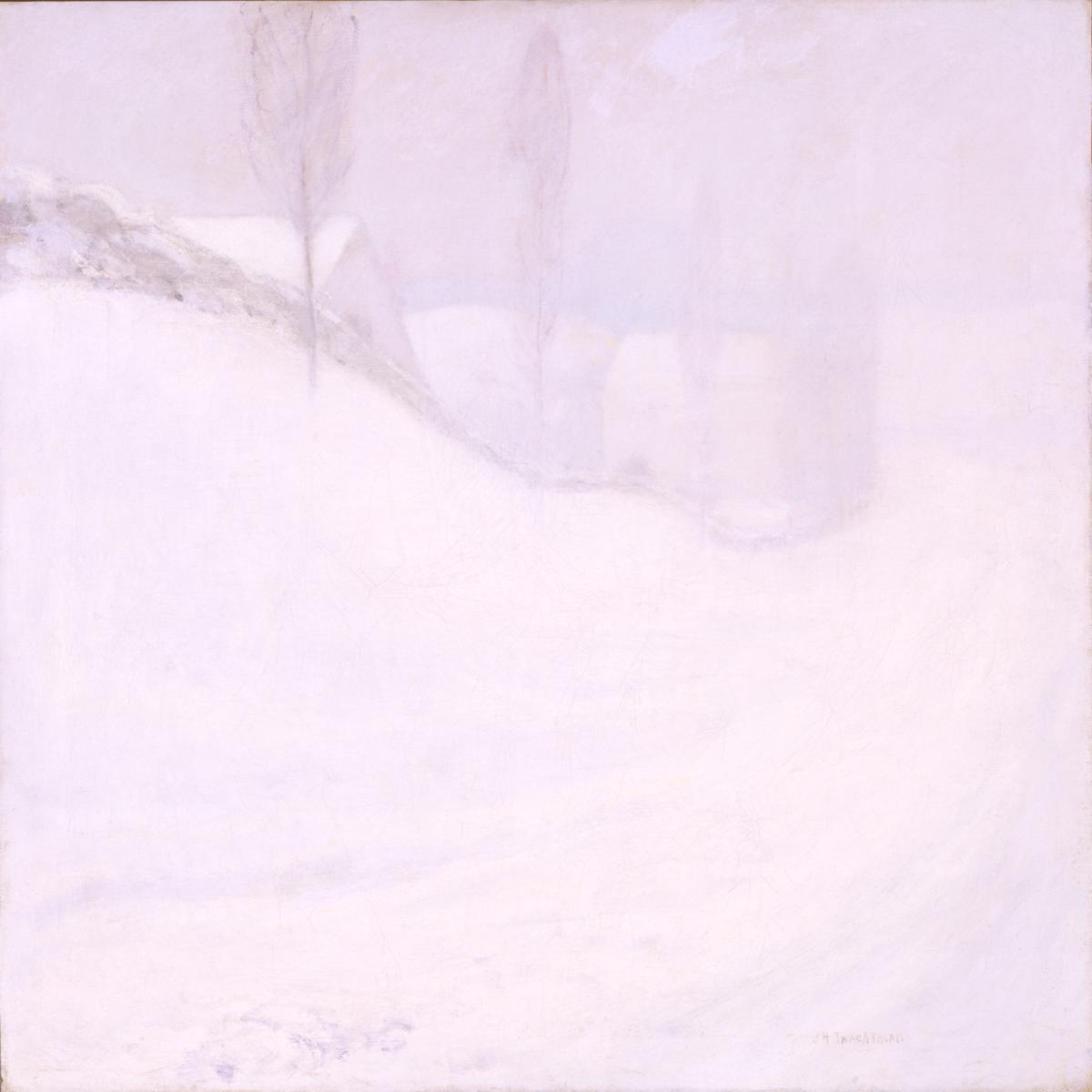
The shortest days of the year are behind us. In the darkest days, holidays and festivals that celebrate light in all its shapes and forms abound: we gather by candlelight, light from fires, and in the sparkle that comes off an illuminated, decorated tree. The light-starved days of winter are not over yet, but the amount of daylight increases until we reach the summer solstice and, happily, the longest day of the year.
Artists have been capturing all the different moods of light for millennia. American artists such as members of the Hudson River School, or the American impressionists, managed to capture light as a way of defining the landscape. Light varies by time and geography, each variation distinct, whose mood cannot be swapped for one another. Richard Diebenkorn had his west coast light and the abstract expressionists clung to the light of the east.
American impressionist painter John Henry Twachtman captured the winter light of the Cos Cob section of Greenwich, Connecticut in his painting Round Hill Road. The bright light reflects off the snow and creates a limited palette that sings like a chorus of white. (I've always loved knowing that white is actually made up in equal measure of all the colors in the spectrum.) Twachtman, born in Ohio in 1853, died in Massachusetts in 1902. He settled in Greenwich in 1899 and helped found the Cos Cob Art Colony. He was also a renowned teacher at the Art Students League in New York City.
This story was originally published on January 26, 2009.


















